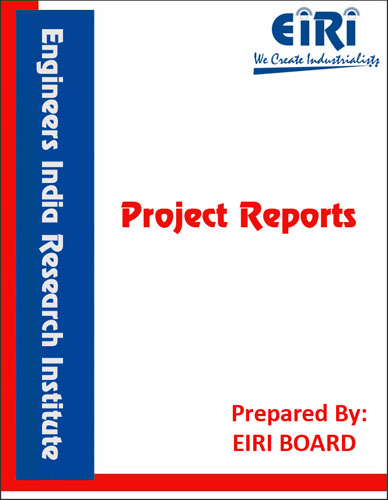Description
When sugar from sugarcane was introduced cannot be definitely stated, but brown sugar or gur (Jaggery) was the first known form of sugar manufactured from sugarcane as well as from wild date palm (phonnix sulvestris), palmyra palm (Borassus flapellifar), toddy palm (Caryota urens) and other palms that contain 12-14% sugar in their sap tapped for the purpose. Fermented toddy sap yields a beverage commonly used in India. An about one lakh tonne of brown sugar or gur is still produced from palm sap in India. Gur has always been and is still being recommended in Ayurvedic Medicinal system for nutritive quality and as a much safer form of sugar than pure white (centrifugal) sugar for regular consumption. In the Indian sub-continent the gur is commonly used in preference to molasses free white sugar for many sweet prepartions because of its specific taste. In fact, the findings of a British scientist, John Yadkin, have shown that heavy consumption of highly clarified white sugar or pure sucrose obtained from the modern sugar mills is largely responsible for hyperinsinulism and coronary heat diseases in human beings. Gur is safe from this aspect.
Gur (Jaggery) production in India is more than 1.5 times of that of white sugar production (a decade back it was double). Nearly half of the total cane production is utilised for gur produced by open pan method; its production by vacuum process has not been yet successful. Gur production is 10-12% from cane in open pan and about 15% in vacuum process. Even at higher price than white sugar the gur (that contains 70-75% sucrose, 14-16% invert sugars, 5% moisture, and 5% other ash creating material) is still preferred for many special dishes and also in daily use. Besides Indian many countries of Central Americal (Costa Rica, Mexico), sough Americal (Brazil, Columbia) and Asia (including Pakistan, Indonesia, Japan) use this kind of non-crystalline sugar called variously (Repodura, Chancaca, Pancoa, Mascasvado, Popiton, Jaggery, etc.) Asian countries are the largest consumers (80-) of these forms of sugar.
Gur (Gul, gud, vellum, bella), is the product obtained on concentrating sugarcane juice with or without prior purification, into a solid or semi-solid state. It is produced almost throughout India and forms an important item of the Indian diet. The manufacture of gur holds a very important place in the rural economy of the country. Uttar Pradesh accounts for c. 45 percent of the total production of gur while Punjab and Haryana account for some 10 percent. The States of Maharashtra, Andhra Pradesh, Mysore and Tamil Nadu together account for some 30 percent of the total production of gur in the country.
Project Report Includes:
- Introduction
- Advances In Jaggery Industry
- Table Composition Of Cane `Gur’ & Palm `Gur’
- Specification Of Jaggery Powder
- Properties And Characteristics Of Jaggery Powder
- Comparison Chart Of Nutritive Value Of Jaggery,
- Khandsari And Sugar
- Properties
- Table-Juice Constituents Of Some Varieties Of Sugarcane
- Analysis Of Juice Of Mature (Good) Sugarcane
- Composition Of Sugar Cane Juice
- Uses & Application
- Uses And Application Of Jaggery Powder
- B.I.S. Specifications
- Market Survey
- Production Of Gur/Jaggery
- Apparent Consumption Of Jaggery (Lacs Mt.)
- Estimated Demand In Lacs Mt.
- Demand Supply Gap
- Jaggery Prices Shoot Up, In Line With Those Of Sugar
- Current Demand
- Demand Growing
- Good Response
- Jaggery Export Data
- Present Manufacturers/Suppliers Of Jaggery
- Varieties Of Sugarcane
- Table 1-Sugarcane Varieties In Cultivation Or Recommended For Cultivation
- Different Form Of Jiggery And Their Production Method
- Manufacturing Process Of Solid Jaggery
- Process Flowsheet Of Gur/Jaggery Manufacturing
- Manufacturing Process Of Jaggery Powder
- Process Flow Diagram Of Jaggery Powder
- Block Diagram Of Jiggery Powder Plant
- Method Of Manufacturing Different Type Of Jiggery
- Unit Operation Of Jiggery Manufacture
- Plant Layout
- Turnkey Consultants
- Suppliers Of Plant And Machineries For Jaggery
- Suppliers Of Raw Materials
Appendix – A :
1. Cost Of Plant Economics
2. Land & Building
3. Plant And Machinery
4. Fixed Capital Investment
5. Raw Material
6. Salary And Wages
7. Utilities And Overheads
8. Total Working Capital
9. Cost Of Production
10. Profitability Analysis
11. Break Even Point
12. Resources Of Finance
13. Interest Chart
14. Depreciation Chart
15. Cash Flow Statement
16. Projected Balance Sheet



